Dischidia ovata, commonly known as Watermelon Dischidia, is an attractive indoor plant that features striking, fleshy, round leaves with a distinctive pattern that resembles the texture of a watermelon rind. These plants have a trailing or cascading growth habit, making them ideal for hanging baskets or shelves, where their vines can elegantly drape down.
The leaves are typically green with lighter, silvery spots or markings, adding a unique texture and visual interest to the plant. The watermelon-shaped pattern is particularly noticeable on the newer leaves, making it a standout feature in indoor plant displays.
Dischidia ovata is relatively easy to care for, preferring bright, indirect light and moderate watering. It’s a great choice for those looking for a low-maintenance but visually striking addition to their indoor plant collection.

Light
Watermelon Dischidia thrives in bright, indirect light. Avoid direct sunlight, as it can scorch the leaves.

Watering
The leaves of Dischidia are small and succulent, and it will tolerate minimum levels of watering. We recommend allowing the soil to nearly completely dry out between waterings. The number one sign of underwatering is drooping, wilted leaves. You can tell if you are overwatering by the leaves yellowing and falling off. Overwatering may eventually lead to root rot.

Humidity
This plant prefers moderate to high humidity. It can benefit from occasional misting, especially in dry indoor environments.

Feed
Liquid fertiliser can be applied during the growing season, once a month or so should be sufficient.

Height & Growth Rate
Watermelon Dischidia typically grows up to 6-12 inches in height, but its trailing vines can extend much longer, up to 3-4 feet, making it great for hanging baskets or as a trailing accent plant.
Propagation: Dischidia ovata can be propagated through stem cuttings. Simply cut a healthy stem and root it in water or directly in moist soil.

Toxicity
Dischidia ovata is generally considered non-toxic to pets (cats and dogs). However, it’s always best to prevent pets from chewing on plants, as some may still cause mild digestive upset if ingested in large amounts.

Air Purifying
It can help improve indoor air quality by absorbing carbon dioxide and releasing oxygen. It may also contribute to humidity, which can indirectly improve air quality, especially in dry indoor environments.
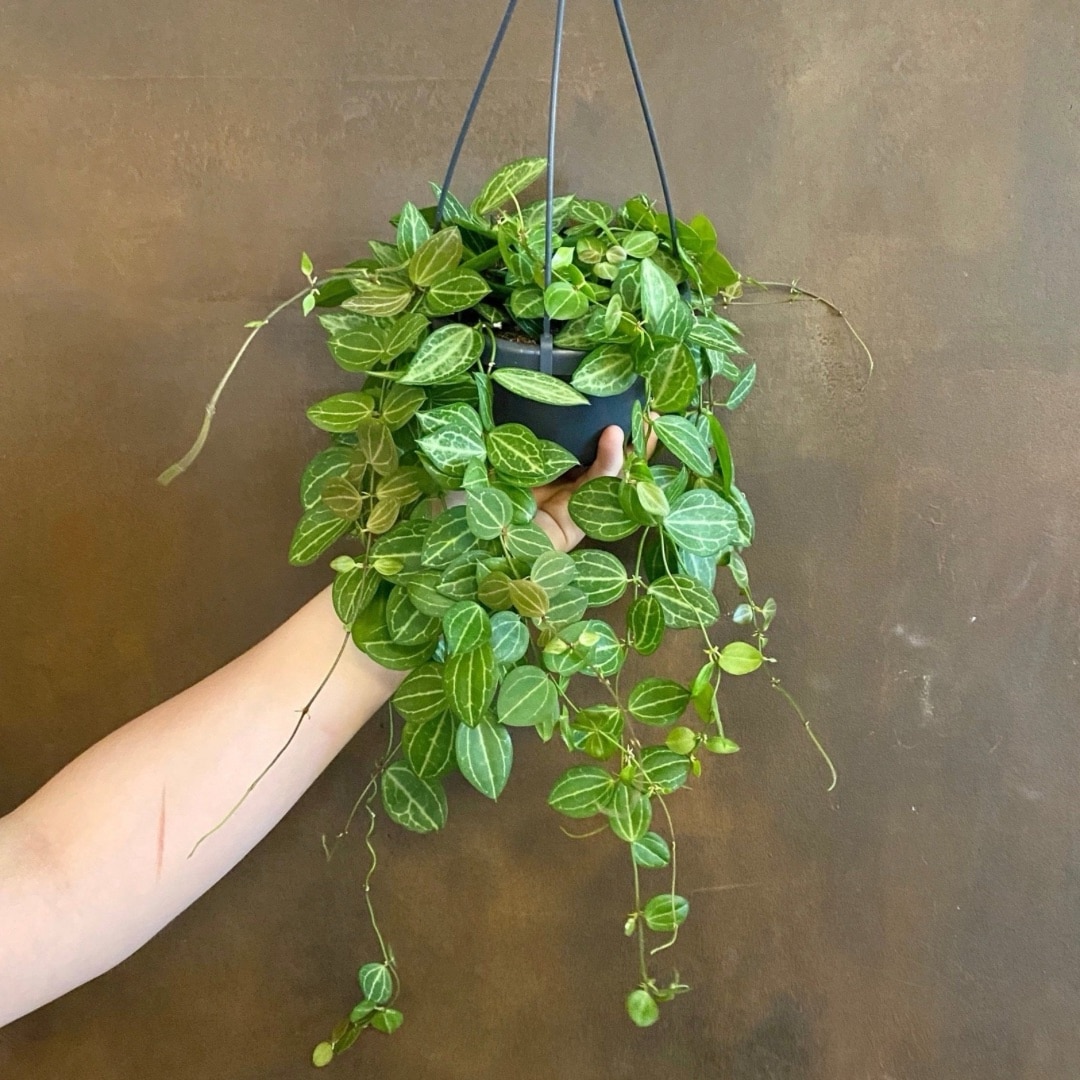
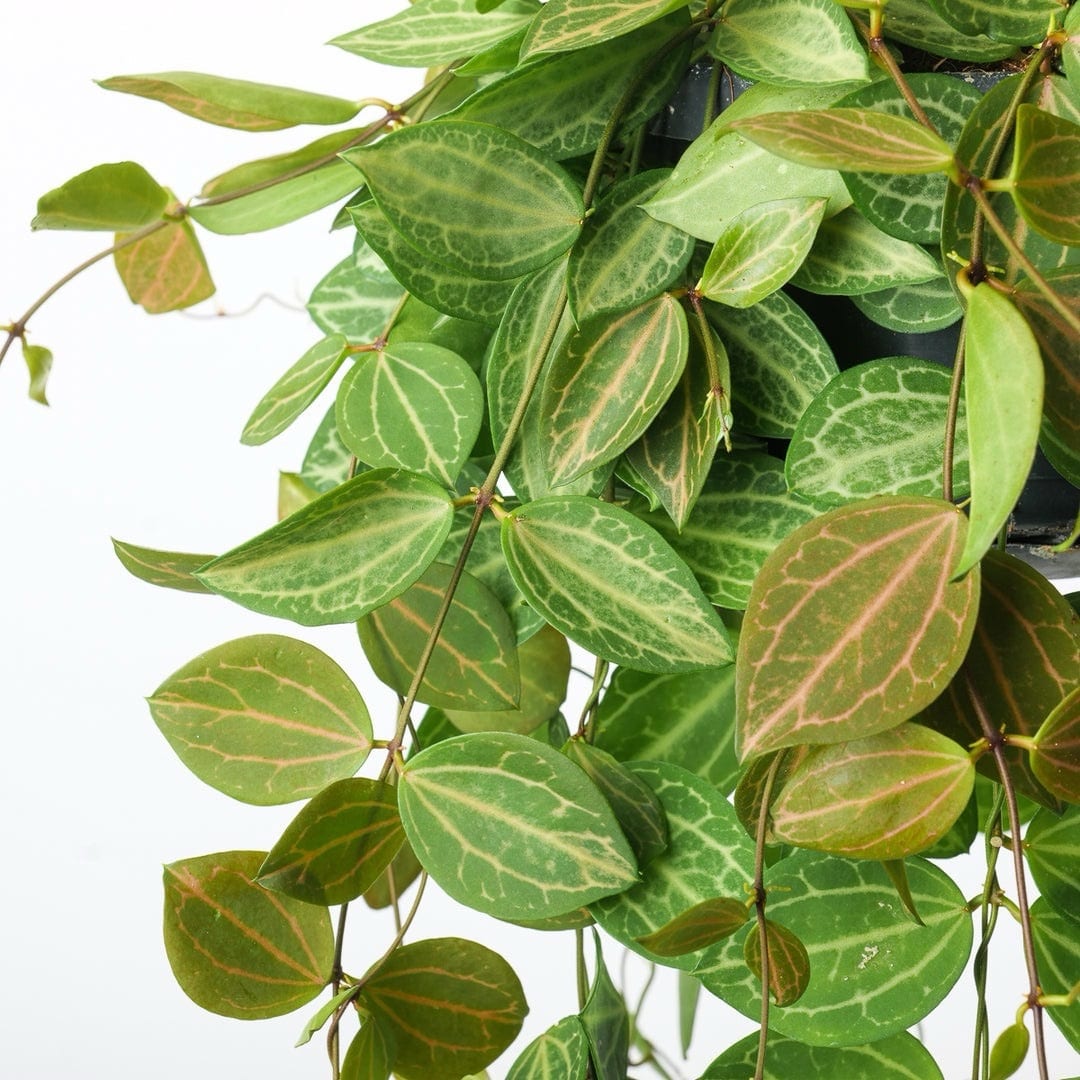



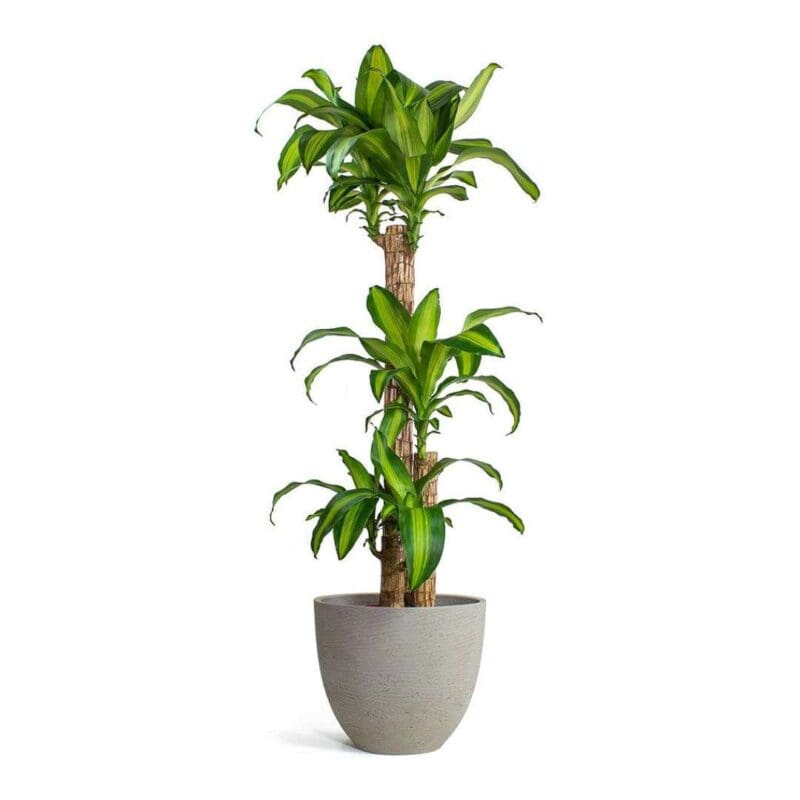

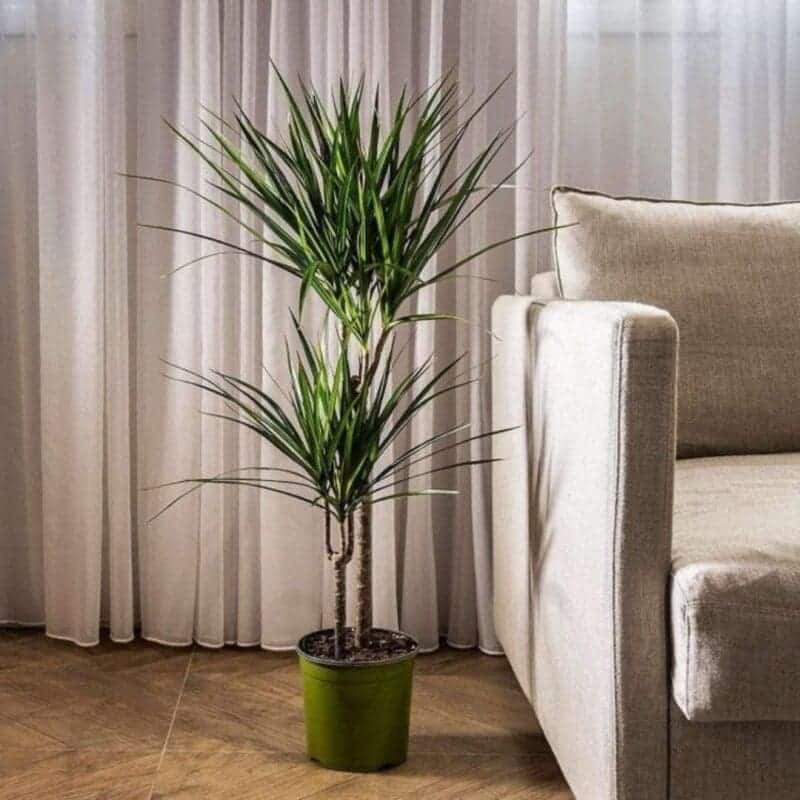


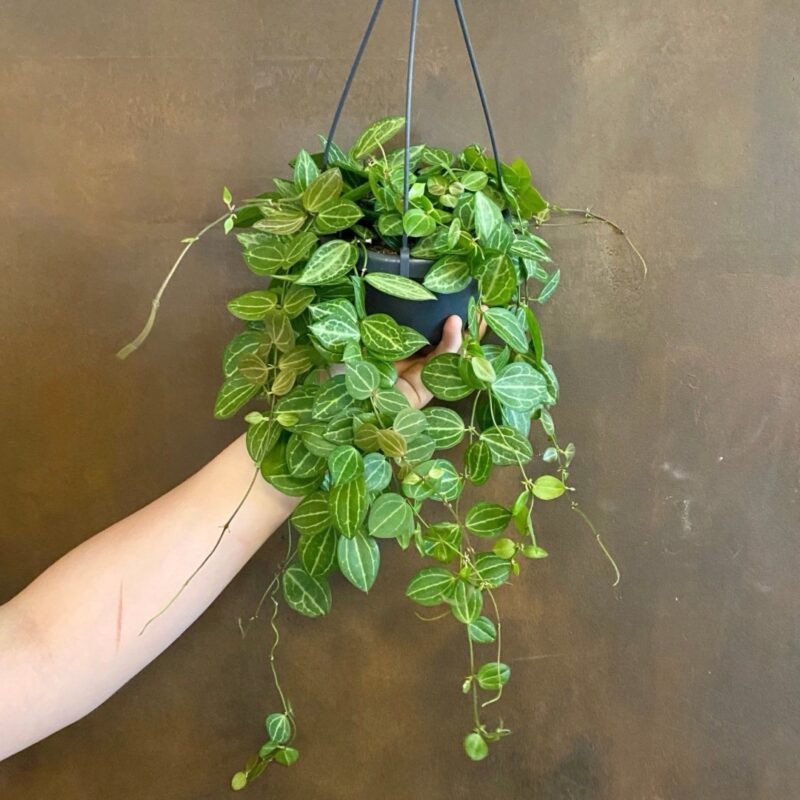
Diana Titai –
I always worry a little when ordering hanging plants, but this watermelon plant had absolutely beautiful 🤩 She is thriving.
Teri Latterie –
Nice plant
Layila Shirath –
Took a little longer to arrive, but totally worth the wait!